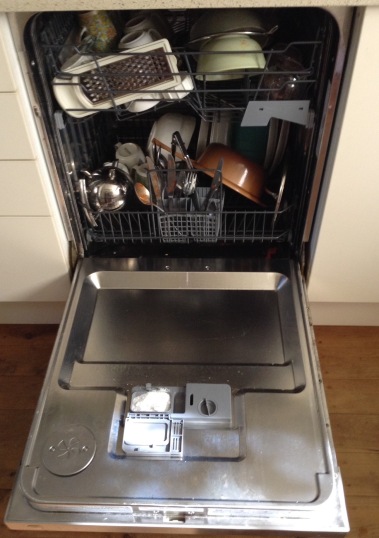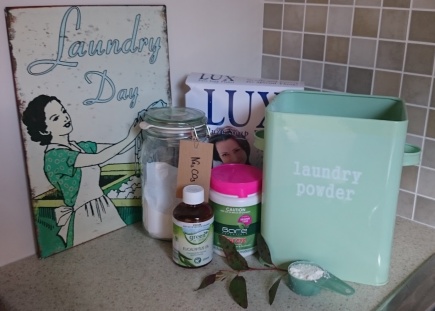A very quick to make simple substitute for store bought dishwashing tablets. Buying the ingredients in bulk means these work out at about 27 cents per wash. As economical as any of the products in the supermarket, but without all the packaging and nasties.
 Dishwashers can be very economical in terms of water and electricity use. Dishwashing powders, however, are usually pretty harsh on the environment. Those little pods, which seem to be the most popular, range in price from about 30 to 70 cents each. They are over-packaged, with individual plastic wraps inside a cardboard box, or another plastic bag.
Dishwashers can be very economical in terms of water and electricity use. Dishwashing powders, however, are usually pretty harsh on the environment. Those little pods, which seem to be the most popular, range in price from about 30 to 70 cents each. They are over-packaged, with individual plastic wraps inside a cardboard box, or another plastic bag.
The way they are marketed makes them sound almost space-age – ‘ultra’, ‘platinum’ and ‘quantum’ are just some of the terms tossed about. Unless you are feeling more natural – then it’s ‘citrus’, ‘apple’ or ‘lemon’. There’s nothing nice about pentasodium triphosphate (it’s amazing how many formulations have phosphate salts in them), and subtilisin may cause allergic reactions. Of course these chemicals are rinsed from your dishes and won’t cause you any harm unless you touch or ingest them, but they do end up in the waterways.
Despite the fancy names and packaging many of the formulations only have a couple of active ingredients and so these are are really quick and simple do-it-yourself product. If you have a bulk store then you can buy citric acid and sodium percarbonate easily. Otherwise you might have to source those online. The other ingredients are sold in most supermarkets.
Got five minutes? Let’s make dishwasher powder!
This is a ratio recipe. Simply double, or triple the quantities to make up the amount you desire. I usually double the basic ratio for each batch, which lasts us a couple of months and gives about 32 washes.
1/2 cup citric acid
Active ingredient and chelating agent – removes metals and softens water. Plant derived, biodegradable and suitable for greywater and septic tanks.
1/2 cup washing soda
AKA sodium carbonate – softens water and removes grease. Mineral derived, suitable for greywater and septic tanks.
1/2 cup sodium percarbonate
AKA sodium carbonate peroxide. Non-chlorine bleach, mineral derived, biodegradable and suitable for greywater and septic tanks.
1/2 cup sodium bicarbonate
AKA sodium hydrogen carbonate – weak disinfectant and stain remover.Mineral derived, suitable for greywater and septic tanks.
1 T tea tree oil (as fragrance, optional)
Add all the ingredients to a container and shake.
Use about a tablespoon per wash. I use a small scoop that came with the eco-detergent I used to buy before I switched to making my own.
Big commerce would have you believe you not only need dishwasher powder, but rinse aid and even detergent to clean the dishwasher itself. There’s no need to buy rinse products. I never use them. I’ve filled the rinse dispenser with white vinegar a few times, but I can’t see it makes any difference. Occasionally I leave a half a squeezed out lemon on the top rack during a wash before composting. I also don’t rinse the dishes before I load them. No domestic disasters have resulted and it means I have one product under my sink instead of the two or three I’m ‘supposed’ to need.
Let me know how it goes for you. Happy dishwashing!

 half that.
half that.